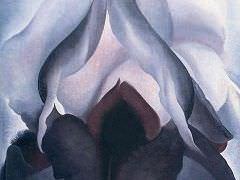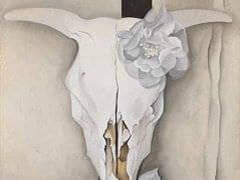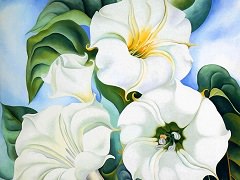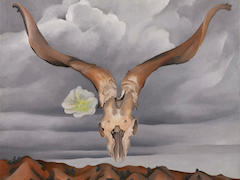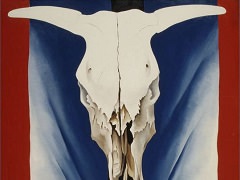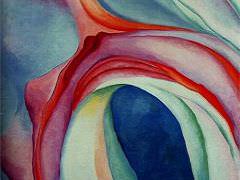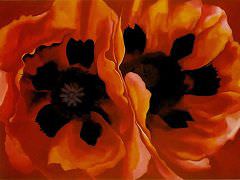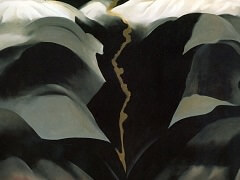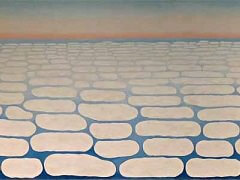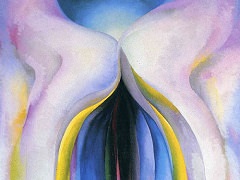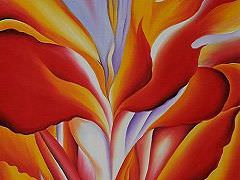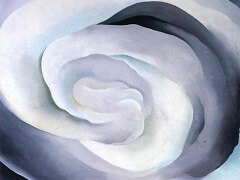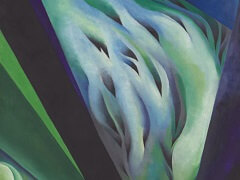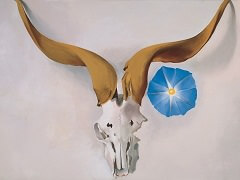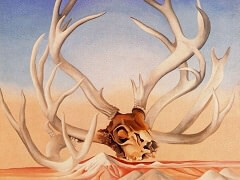Ram's Skull with Brown Leaves, by Georgia OKeeffe
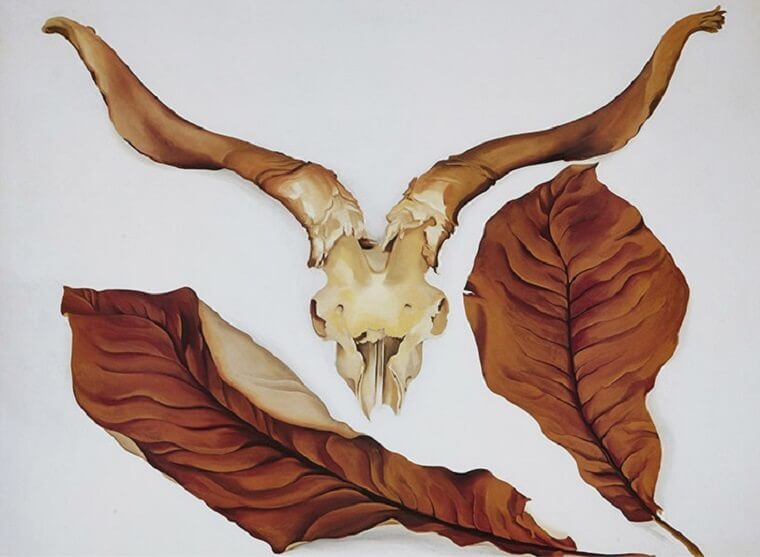
Toward the end of the decade, the strains of dealing with the New York art world, her growing boredom with Lake George, and her deteriorating relationship with Stieglitz took their toll on her physical and emotional health. In response, she made her first extended trip to New Mexico in 1929. It was a visit that had a lasting impact on her life, and an immediate effect on her work. Over the next twenty years, from 1929 to 1949, she made almost annual trips to New Mexico, staying up to six months there, painting in relative solitude, then returning to New York each winter to exhibit the new work at Stieglitz's gallery. This pattern continued until she moved permanently to New Mexico in 1949.
There, O'Keeffe found new subjects to paint in the sun-bleached animal bones and the rugged mountains that dominate the terrain. The desert bones of New Mexico sparked O'Keeffe's imagination. Rather than signifying death, O'Keeffe said that the bones symbolized the eternal beauty of the desert. Later, she painted fanciful canvases that combined skeletal objects and landscape imagery in the same composition. The results were provocative and unsettling, and the odd juxtapositions and discrepancies in size and scale led some to call these works surreal.

